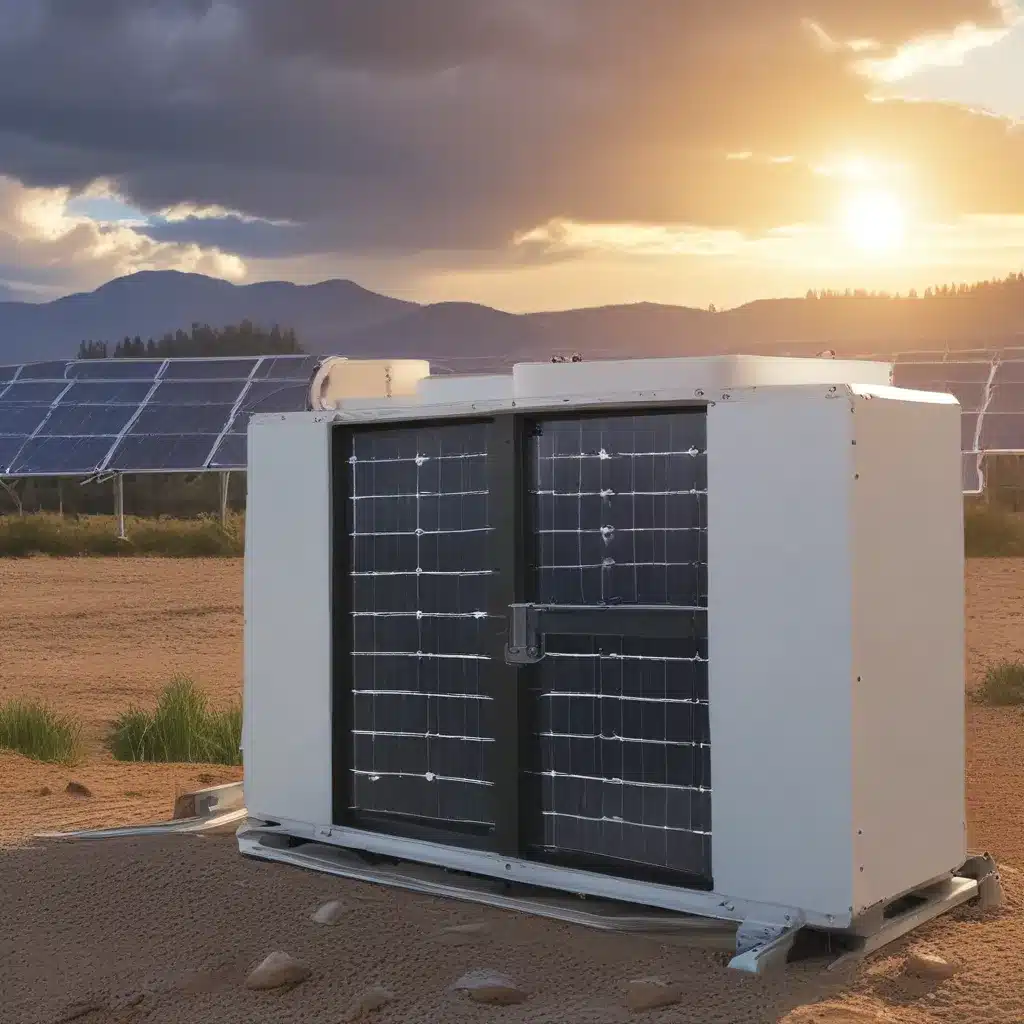
Are you tired of relying on the grid and paying those hefty electricity bills? Well, my friend, I’ve got the solution for you – building your own solar battery bank for energy storage! It might sound like a daunting task, but trust me, it’s more achievable than you think.
Demystifying Solar Battery Banks
Let’s start by understanding exactly what a solar battery bank is. Essentially, it’s a collection of batteries, usually deep-cycle batteries, that are connected together to store the energy generated by your solar panels. This stored energy can then be used to power your home or business when the sun isn’t shining.
Now, you might be thinking, “But won’t that be really expensive?” Not necessarily! With the right knowledge and a little elbow grease, you can build a solar battery bank on a budget. And let me tell you, the feeling of being energy-independent is priceless.
Choosing the Right Batteries
The first step in building your solar battery bank is to select the right type of batteries. Deep-cycle batteries are the way to go, as they’re designed to be regularly discharged and recharged, unlike your standard car battery.
There are a few different options when it comes to deep-cycle batteries. You’ve got your lead-acid batteries, which are the most affordable but also the heaviest and bulkiest. Then there are lithium-ion batteries, which are more expensive but lighter and more efficient. And let’s not forget about the newer kid on the block, the lithium-iron-phosphate (LiFePO4) batteries, which offer a great balance of cost, weight, and performance.
This video does a great job of breaking down the pros and cons of each type of battery. It’s definitely worth a watch before you make your decision.
Sizing Your Solar Battery Bank
Once you’ve decided on the type of batteries you want to use, it’s time to figure out how many you’ll need. This is where things can get a little tricky, as it depends on a few factors:
- How much energy you need to store
- The capacity of the batteries you’ve chosen
- The depth of discharge (DoD) you’re comfortable with
As a general rule of thumb, you’ll want to aim for a solar battery bank that can store enough energy to power your home or business for at least a couple of days. This will give you a nice buffer in case of prolonged periods of cloudy weather or unexpected power outages.
This forum post provides a great example of how to size a solar battery bank for a specific use case. It’s definitely worth a read if you’re feeling a little lost.
Building Your Solar Battery Bank
Alright, now for the fun part – actually building your solar battery bank! This is where you’ll need to put on your DIY hat and get a little hands-on.
First, you’ll need to choose a suitable location for your battery bank. It should be a dry, well-ventilated area, as batteries can produce hydrogen gas during charging and discharging. Safety should always be your top priority.
Next, you’ll need to connect your batteries in series or parallel, depending on the voltage and capacity requirements of your system. This is where things can get a little technical, but there are plenty of helpful videos and guides out there to walk you through the process.
Once your batteries are all wired up, you’ll need to install a charge controller to regulate the flow of electricity from your solar panels to your battery bank. This will help prevent overcharging and ensure your batteries stay healthy and last as long as possible.
And let’s not forget about the inverter! This nifty little device will convert the DC electricity stored in your battery bank into the AC electricity that your home or business can use.
Maintaining Your Solar Battery Bank
Alright, so you’ve got your solar battery bank all set up and ready to go. But the work doesn’t stop there! Proper maintenance is key to ensuring your system lasts for years to come.
First and foremost, you’ll want to keep a close eye on your battery levels and make sure they’re not being overcharged or discharged too deeply. Deep-cycle batteries can be a little finicky, but with a little TLC, they’ll serve you well.
You’ll also want to make sure your battery bank is kept clean and well-ventilated. Dust and dirt can build up over time and reduce the efficiency of your system, so a quick wipe-down every now and then can go a long way.
And let’s not forget about those pesky battery terminals. Make sure they’re kept clean and free of corrosion, as this can seriously impact the performance of your system.
The Benefits of Going Solar
Alright, so you’ve built your solar battery bank and you’re keeping it in tip-top shape. Now, let’s talk about the benefits of going solar.
First and foremost, you’re going to see a significant reduction in your energy bills. Depending on the size of your system and your energy usage, you could be looking at savings of hundreds, if not thousands, of dollars per year.
But the benefits don’t stop there. By reducing your reliance on the grid, you’re also doing your part to reduce your carbon footprint and help the environment. And let’s not forget about the sense of satisfaction and independence that comes with being energy-self-sufficient.
So, what are you waiting for? Head on over to Solar A Systems Inc. and let’s get started on building your very own solar battery bank!


